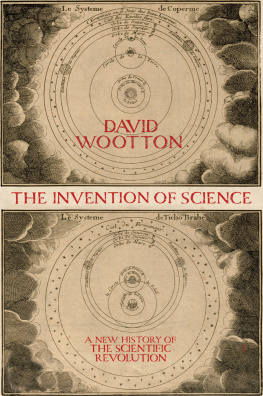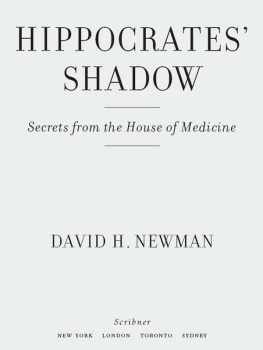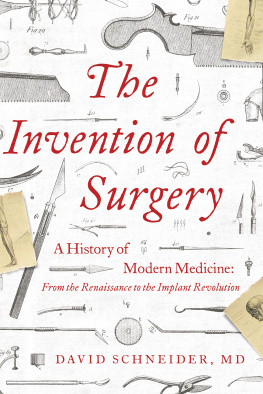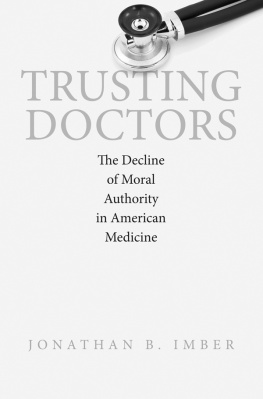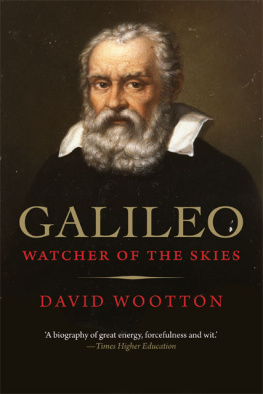Wootton - Bad Medicine
Here you can read online Wootton - Bad Medicine full text of the book (entire story) in english for free. Download pdf and epub, get meaning, cover and reviews about this ebook. year: 2006, publisher: Oxford University Press USA - OSO, genre: Religion. Description of the work, (preface) as well as reviews are available. Best literature library LitArk.com created for fans of good reading and offers a wide selection of genres:
Romance novel
Science fiction
Adventure
Detective
Science
History
Home and family
Prose
Art
Politics
Computer
Non-fiction
Religion
Business
Children
Humor
Choose a favorite category and find really read worthwhile books. Enjoy immersion in the world of imagination, feel the emotions of the characters or learn something new for yourself, make an fascinating discovery.

Bad Medicine: summary, description and annotation
We offer to read an annotation, description, summary or preface (depends on what the author of the book "Bad Medicine" wrote himself). If you haven't found the necessary information about the book — write in the comments, we will try to find it.
Wootton: author's other books
Who wrote Bad Medicine? Find out the surname, the name of the author of the book and a list of all author's works by series.
Bad Medicine — read online for free the complete book (whole text) full work
Below is the text of the book, divided by pages. System saving the place of the last page read, allows you to conveniently read the book "Bad Medicine" online for free, without having to search again every time where you left off. Put a bookmark, and you can go to the page where you finished reading at any time.
Font size:
Interval:
Bookmark:
BAD MEDICINE

Great Clarendon Street, Oxford OX 2 6 DP
Oxford University Press is a department of the University of Oxford. It furthers the Universitys objective of excellence in research, scholarship, and education by publishing worldwide in
Oxford New York
Auckland Cape Town Dar es Salaam Hong Kong Karachi Kuala Lumpur Madrid Melbourne Mexico City Nairobi New Delhi Shanghai Taipei Toronto
With offices in
Argentina Austria Brazil Chile Czech Republic France Greece Guatemala Hungary Italy Japan Poland Portugal Singapore South Korea Switzerland Thailand Turkey Ukraine Vietnam
Oxford is a registered trade mark of Oxford University Press in the UK and in certain other countries
Published in the United States by Oxford University Press Inc., New York
David Wootton, 2006
The moral rights of the author have been asserted
Database right Oxford University Press (maker)
First published 2006
All rights reserved. No part of this publication may be reproduced, stored in a retrieval system, or transmitted, in any form or by any means, without the prior permission in writing of Oxford University Press, or as expressly permitted by law, or under terms agreed with the appropriate reprographics rights organization. Enquiries concerning reproduction outside the scope of the above should be sent to the Rights Department, Oxford University Press, at the address above
You must not circulate this book in any other binding or cover and you must impose this same condition on any acquirer
British Library Cataloguing in Publication Data
Data available
Library of Congress Cataloging in Publication Data
Data available
Typeset by RefineCatch Limited, Bungay, Suffolk
Printed in Great Britain by
Clays Limited, St Ives plc
ISBN 0-19-280355-7 978-0-19-280355-9
1 3 5 7 9 1 0 8 6 4 2
For Alison Mark and Lisa Wootton
It is interesting and indeed pathetic to observe how long a discovery of priceless value to humanity may be hidden away, or rather lie openly revealed, before the final and apparently obvious step is taken towards its practical application.
(John Tyndall, 1881)
The lancet was the magicians wand of the dark ages of medicine.
(Oliver Wendell Holmes, 1882)
only the most dyed-in-the-wool Whig history still polarizes the past in terms of confrontations between saints and sinners, heroes and villains.
(Roy Porter, 1989)
by 1700 there was available theoretical and observational evidence which should have made possible the formulation of our modern germ-theory of disease.
(Charles-Edward Amory Winslow, 1943)
Alison Mark first suggested this project. Katharine Reeve commissioned it. Luciana OFlaherty adopted it. Students at Queen Mary, University of London, and at the University of York explored the subject with me. The University of York gave me a sabbatical in which to write. Audiences at Birkbeck, University of London; the History of Science Seminar in the University of Cambridge; the Department of History in the University of York; and the National Humanities Centre at Ralegh-Durham discussed chapters with me. Harold Cook, Lauren Kassell, Stuart Reynolds, and Lisa Wootton read a draft, and I am grateful for their comments. They are not responsible for my errors, nor my failings. Nor, of course, is Alison Mark, who has kept company with this project from beginning to end.
This book is not burdened with numerous footnotes and a lengthy bibliography, though I know it will be read by students and scholars as well as by others with an interest in the subject. For those who wish to pursue this further, at www.badmedicine.co.uk you will find detailed bibliographies and notes, along with links to other web sites. You will also find updates: corrections, clarifications, responses to critics, and references to literature that has appeared since this book was written. The very short bibliography you will find at the end is intended only as an indication of the most important sources on which I have drawn and the most significant works that have influenced my thinking.
James Ensor, The Bad Doctors, 1895. Etching.
Woodcut, reproduced from Guido Guidi, Opera Varia (Lyons, 1599).
Abraham Bosse, Bloodletting, c. 1635.
Eighteenth-century caricature, by Pier Leone Ghezzi, shows a Dr Romanelli.
A Greek vase from c.475 BC showing a doctors surgery.
The tombstone of Jason, an Athenian doctor of the second century AD .
A doctor inspecting urine in a urine bottle, reproduced from Johannes de Ketham, Fasciculus Mediciniae (Venice, 1522).
Anatomy Lesson, from Johannes de Ketham, Fasciculus Mediciniae (Venice, 1522).
The titlepage to the 1st edition of Vesaliuss De Humani Corporis Fabrica.
Two medieval illustrations of skeletons, one from the fourteenth century and one from the mid-fifteenth.
The lateral view of the skeleton from the De Fabrica of 1543. 84
The first illustration of the muscles from the 1543 De Fabrica.
The seventh illustration of the muscles from the 1543 De Fabrica.
Third illustration of the anatomy of the torso from the De Fabrica.
This initial letter L, which appears once in the 1543 edition of De Fabrica.
In this illustration from Juan Valverde de Amuscos Anatomia del corpo humano (1560) an corch or flayed figure holds up his own skin for your inspection.
The illustration of the valves in the veins from Harveys De Motu Cordis.
Large initial letter Q, showing the vivisection of a boar, from the 1555 edition of Vesaliuss De Fabrica.
Vivisection of a dog from J. Walaeus, Epistola Prima de Motu Chyli et Sanguinis (1647).
One of Leeuwenhoeks microscopes.
The compound microscope used by Hooke, as illustrated in his Micrographia (1665).
Seventeenth-century French woodcut of a skull and crossbones, believed to have been produced to be stuck up on the houses of people dying of plague.
The apparatus devised by Tyndall for carrying out spontaneous generation experiments.
Lithograph by Honor Daumier, which appeared in 1883.
A set of Perkins tractors.
Drawing by George John Pinwell, entitled Deaths Dispensary, published in an English magazine, 1866.
The map of the fatalities in the neighbourhood of the Broad Street pump from the second edition of Snows The Mode of Communication of Cholera.
A surgical operation performed in Aberdeen according to Listers principles.
Etching by Charles Maurin, c.1896, showing the researchers from the Institut Pasteur, led by Pierre-Paul-Emil Roux, who had discovered serum therapy for diphtheria.
Swan-necked flask used by Pasteur in his experiments to disprove spontaneous generation.
W. Eugene Smith, Dr Ceriani Making a House Call, 1948. From a photographic essay entitled The Country Doctor published in Life.
The Trustees of the British Museum: ; Louvre, Paris/ RMN/Herv Lewandowski: ; Philadelphia Museum of Art, SmithKline Beecham Fund/ DACS 2005: ; Philadelphia Museum of Art, SmithKline Beecham Fund: 2, 3, 4, 7, 8, 23, 30; Philadelphia Museum of Art, SmithKline Corporation Fund/ 1981 The Heirs of W. Eugene Smith: ; Philadelphia Museum of Art, William H. Helfand Collection: ; Philadelphia Museum of Art, given by Carl Zigrosser: ; Courtesy of the US National Library of Medicine:
Next pageFont size:
Interval:
Bookmark:
Similar books «Bad Medicine»
Look at similar books to Bad Medicine. We have selected literature similar in name and meaning in the hope of providing readers with more options to find new, interesting, not yet read works.
Discussion, reviews of the book Bad Medicine and just readers' own opinions. Leave your comments, write what you think about the work, its meaning or the main characters. Specify what exactly you liked and what you didn't like, and why you think so.

